No man's land: places where time stands still
No-go zones
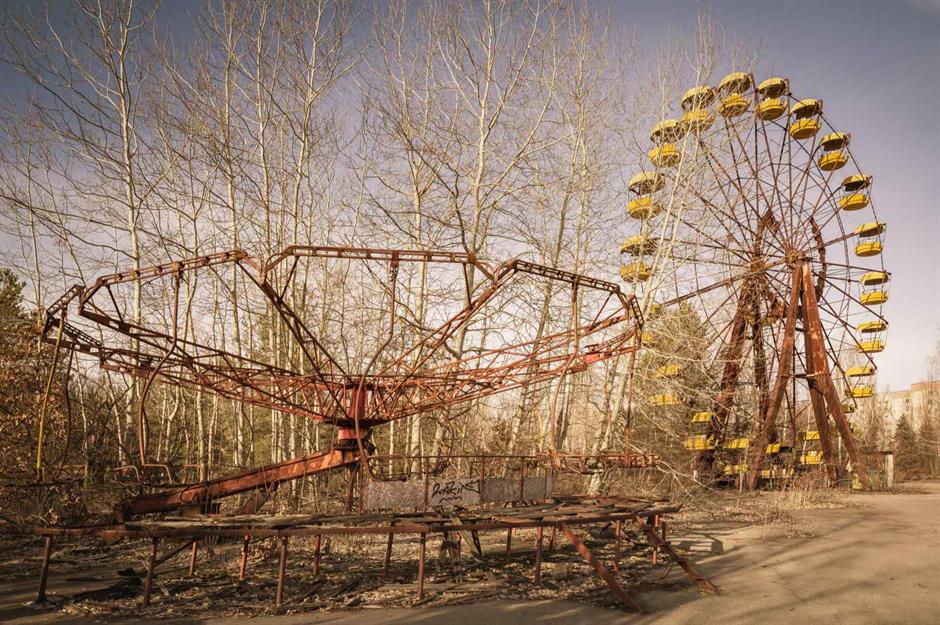
First coined in the UK in the 11th century to describe unloved patches of land outside of city walls, the term ‘no-go area’ has come to refer to places where people dare not tread. That may be because of conflict and political disputes or, increasingly, due to natural or man-made disasters.
Read on to see a selection of the most unwelcoming forbidden zones on the planet, each imbued with a deep sense of foreboding…
DMZ, North and South Korea
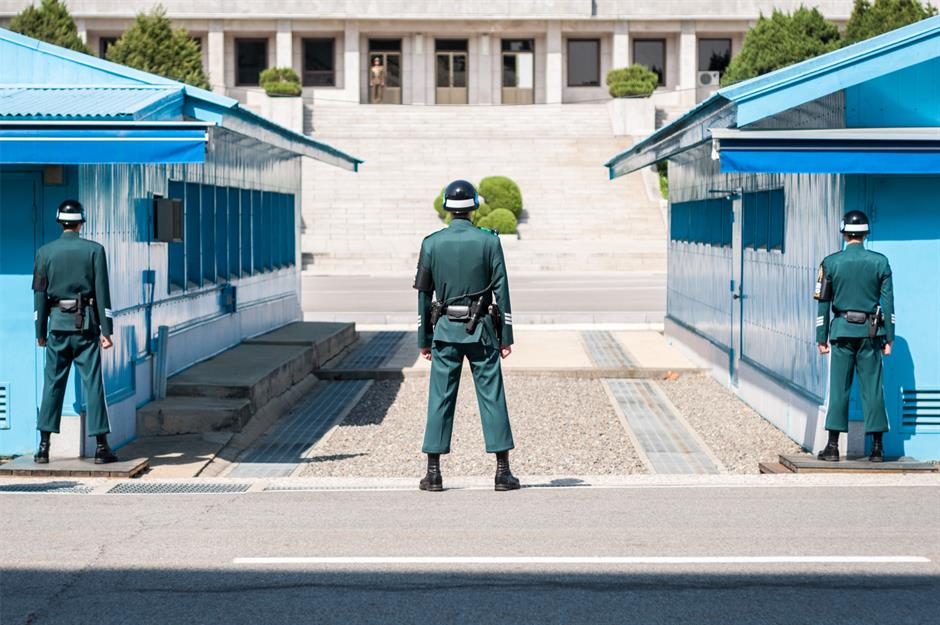
Dividing the Korean peninsula, the Demilitarized Zone (DMZ) was established after the Korean War in 1953 to serve as a buffer between those loyal to the northern or southern leaderships.
Stretching 160 miles (257km) and measuring on average 2.5 miles (4km) in width, the DMZ is one of the world's most heavily militarised borders. However, it isn't just a political barrier.
DMZ, North and South Korea
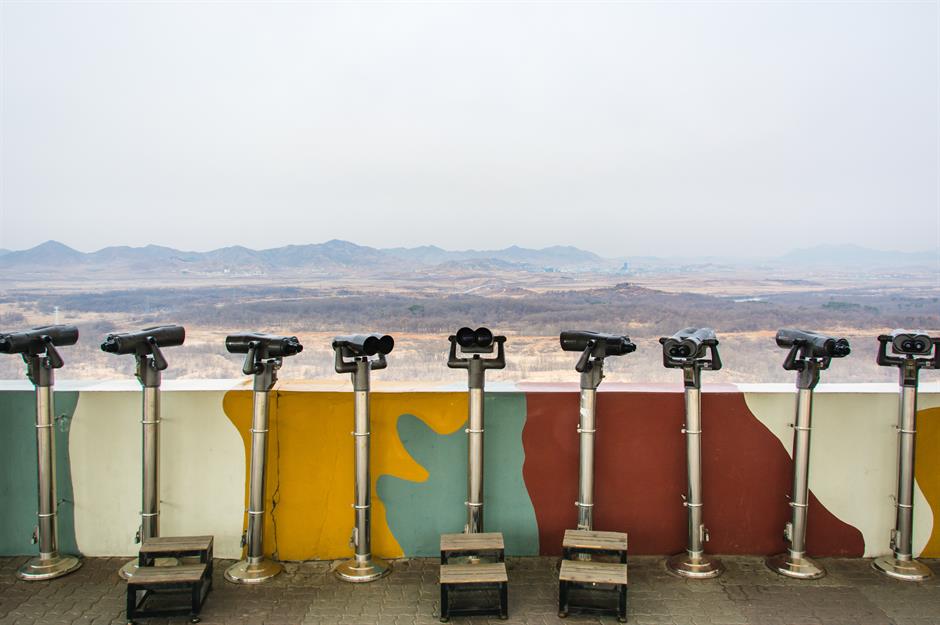
Despite being a no-go area, the DMZ is also a tourist magnet. More than 1.2 million visitors are usually welcomed every year (travelling here typically via Seoul) to see barbed wire fences and infiltration tunnels and to catch a glimpse of Kim Jong-un's kingdom in the north through binoculars.
DMZ, North and South Korea
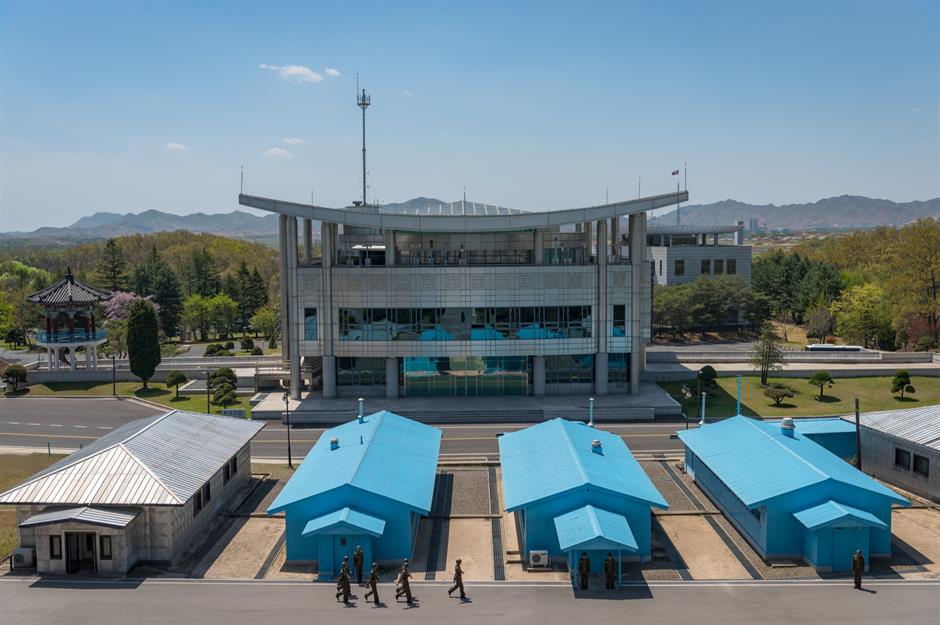
The most well-known site of the DMZ and the closest point to North Korea, is the JSA (Joint Security Area, pictured). Here, soldiers from both countries face each other with only a few feet of gravel in between, always ready to act in case of an emergency.
In the JSA, negotiations between North and South Korea are held, with no negotiator having to leave their country, because the border runs right through the centre of the building, including the table the delegates sit around.
DMZ, North and South Korea

On guided tours, visitors are taken to the infiltration tunnels (pictured) that were dug through the ground to South Korean territory. Four passages have been discovered since the 1970s.
When challenged, North Korean officials claimed they were for coal mining. They even painted the walls black in an effort to convince their South Korean counterparts that coal was present.
DMZ, North and South Korea
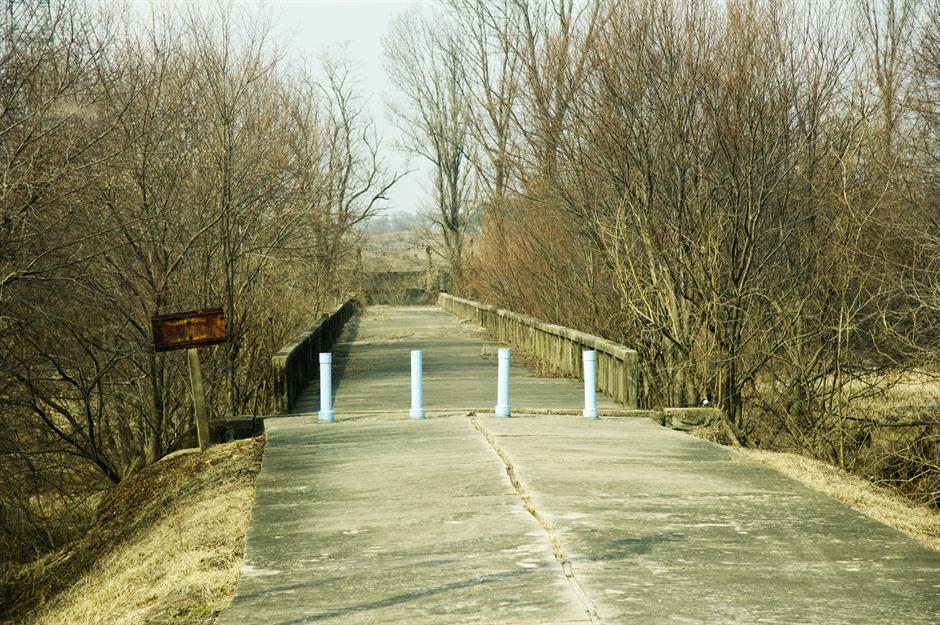
Used for prisoner exchanges, this bridge in the DMZ has been untouched since 1968. Dubbed the 'Bridge of No Return', war prisoners were given an ultimatum to either remain in the country of captivity or cross the bridge to return to their homeland – once across the bridge, however, they were not allowed to return.
DMZ, North and South Korea
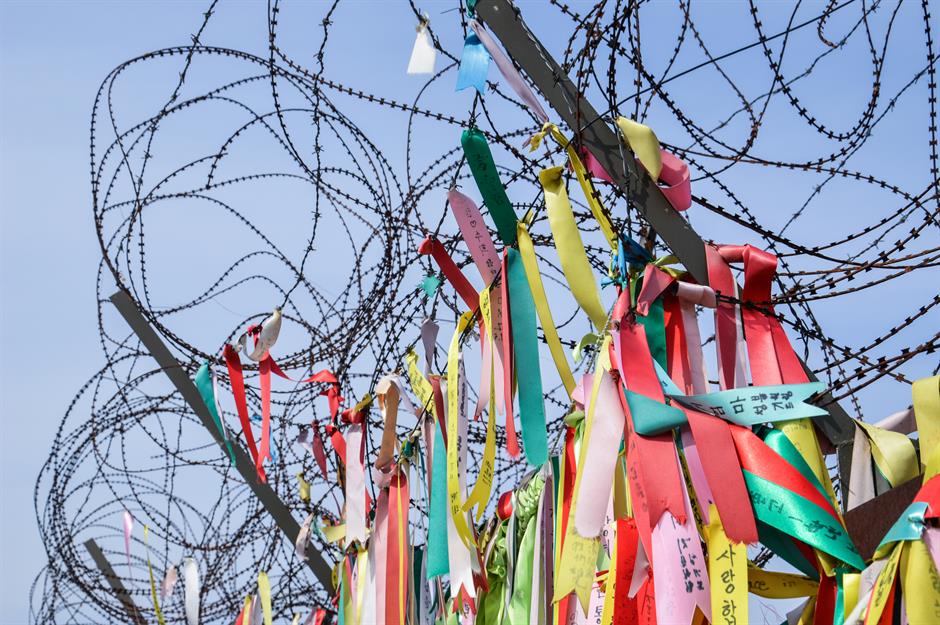
Civilians tie prayer ribbons to fences near the DMZ amid continuing hopes for peace and family reunifications on the Korean peninsula.
Love this? Follow our Facebook page for more travel inspiration
Area 51, Nevada, USA
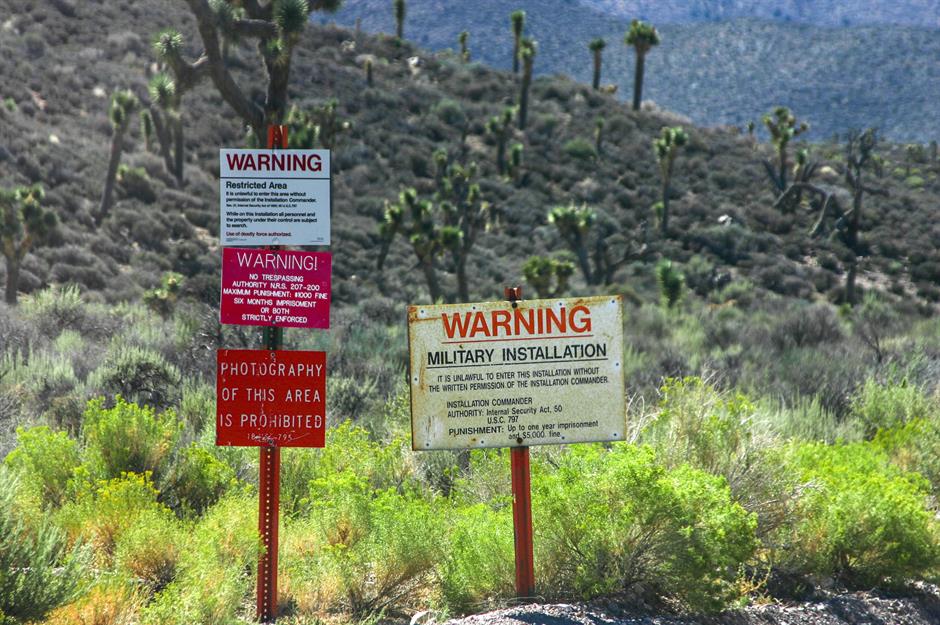
Located in the middle of the Nevada desert, this US Air Force facility has long been kept a secret, leading to the area becoming the focal point for many conspiracy theories and mysteries. Officially referred to as Groom Lake, the restricted Area 51 is a military site used for flight testing.
Area 51, Nevada, USA
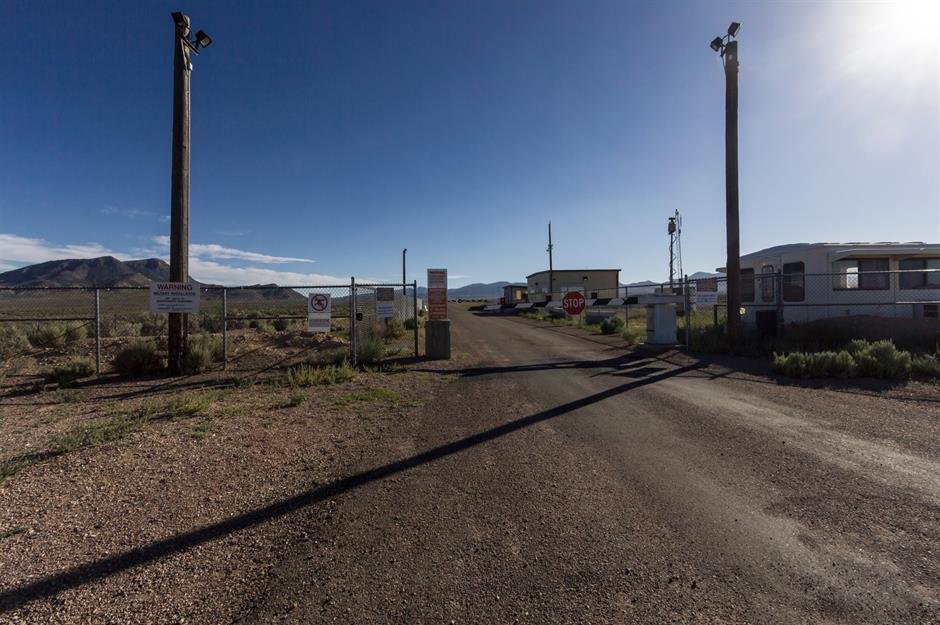
A dusty road leads to the front gate of the guarded military base. Conspiracy theorists believe that the remains of a crashed UFO are stored at Area 51 and alien technology is examined by government scientists, while others are convinced that the Moon landing in 1969 was filmed here.
Area 51, Nevada, USA
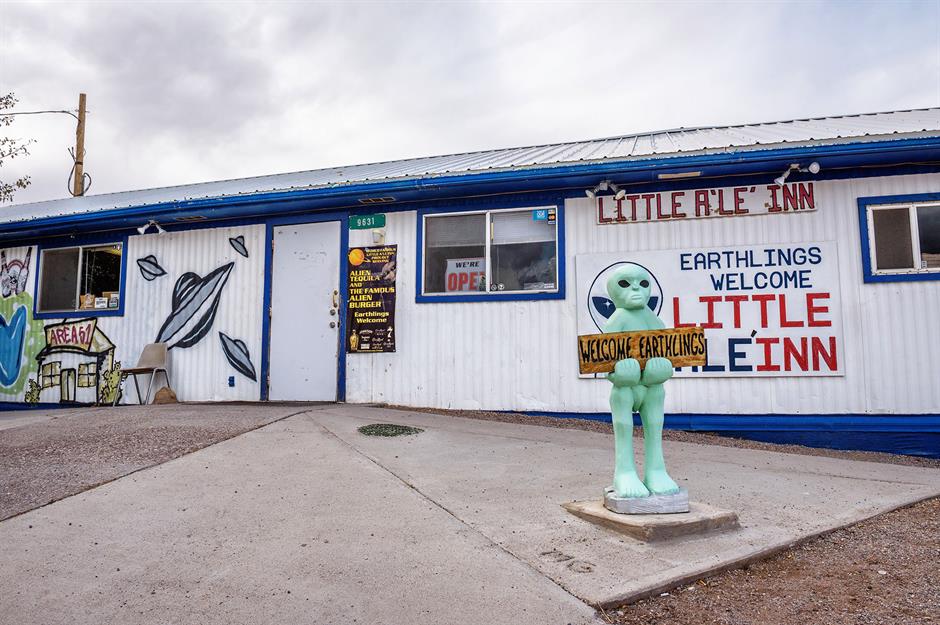
The nearby town of Rachel on the so called ‘Extraterrestrial Highway’ is a tourist attraction. A popular stopover among UFO hunters is the alien-themed motel and restaurant, Little A'Le'Inn (pictured).
Area 51, Nevada, USA
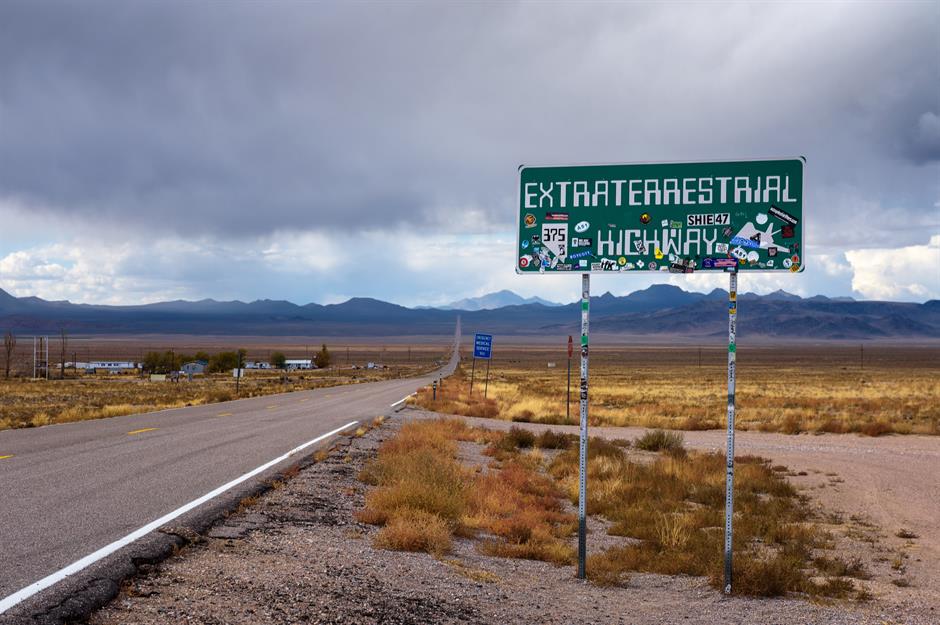
Nevada officially named State Route 375, the 'Extraterrestrial Highway' in 1996. For decades, travellers have met at a mailbox 12 miles (19km) from Area 51 to discuss the UFO sightings and alien activity they believe they’ve seen along the road.
Area 51, Nevada, USA
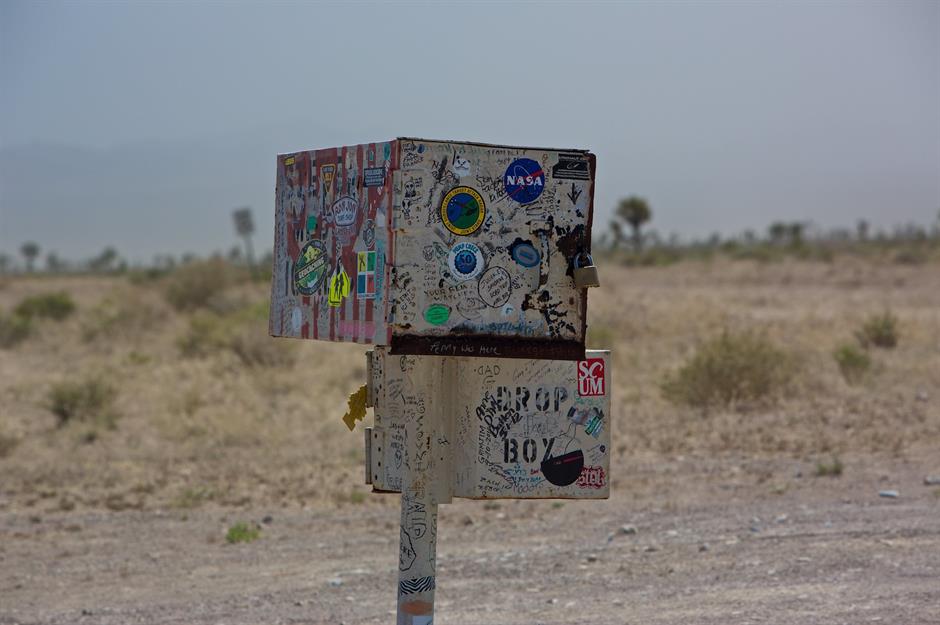
The original box belonged to Steve Medlin who lives on a nearby ranch. It is the only landmark for 40 miles (64km) on the highway and has become a handy meeting point for UFO seekers, many of whom dropped off letters to visitors from other worlds, much to the frustration of its owner.
It was for that reason Medlin moved his own box off the highway, only for it to be replaced by the current Alien mailbox.
Gruinard Island, Inner Hebrides, Scotland, UK
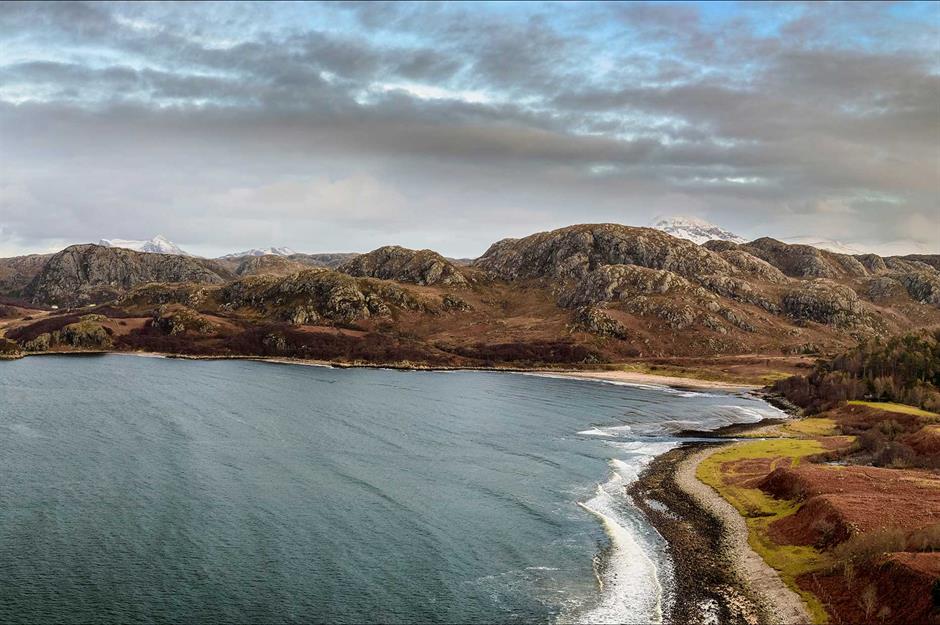
This might look like a stunning spot, but you probably wouldn't want to visit. Gruinard Island was used by the British armed forces to test anthrax bacteria as a potential weapon in the 1940s.
While the island has since been decontaminated, for many years it was under government control. It was repurchased in the 1990s by the original owners but currently isn't populated.
Skeleton Coast, Namibia
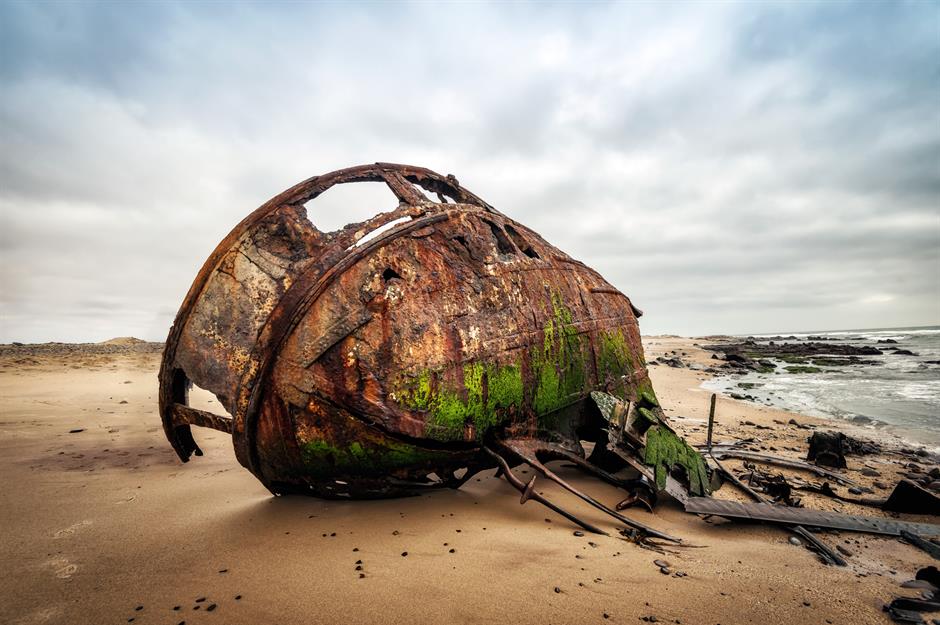
This no man's land located along the Atlantic coast of Namibia has been given many names – all describing its inhospitable and deadly nature. Namibians called it 'The Land God Made in Anger' and Portuguese sailors, 'The Gates of Hell'.
The land is now mostly referred to as the 'Skeleton Coast'. Whale skeletons are scattered all over the area, alongside numerous rusty shipwrecks.
Skeleton Coast, Namibia
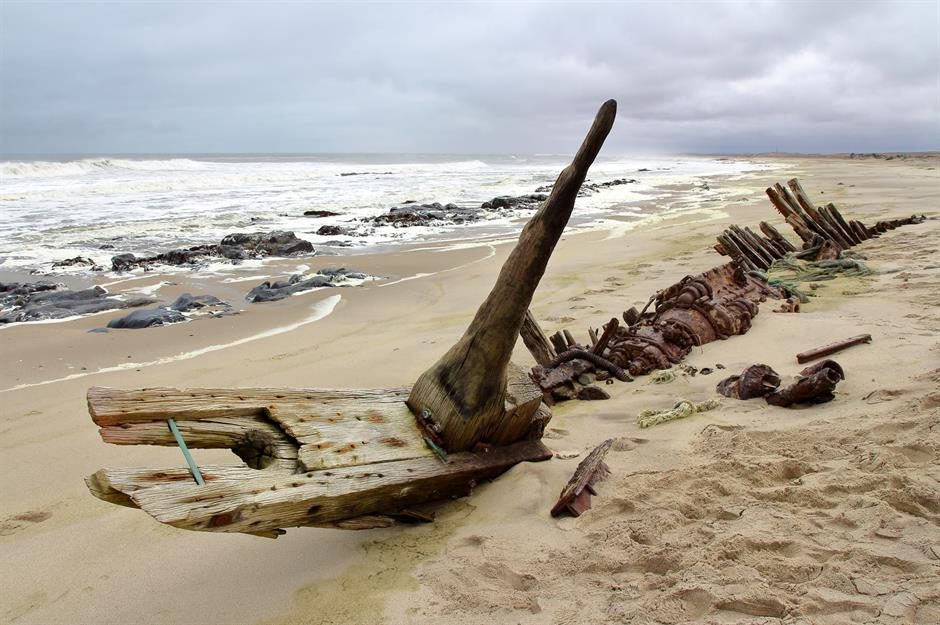
The old wrecks are reminders of how many shipwrecked sailors have lost their lives to the coast. Once stranded, the only way out was by walking hundreds of miles through a hot and arid desert – which was impossible to survive.
Skeleton Coast, Namibia
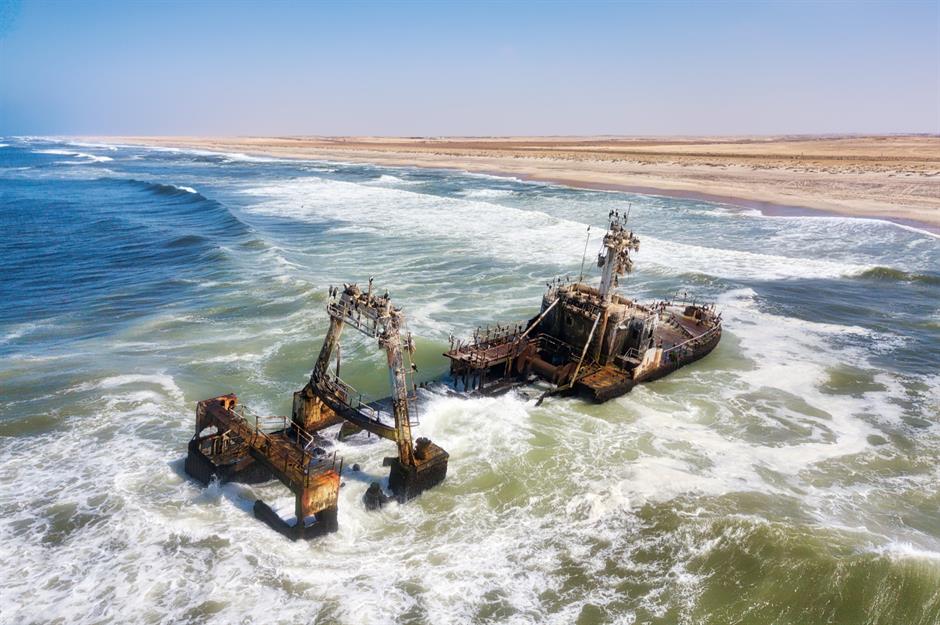
The unpredictable currents in the waters off Skeleton Coast, stormy winds and dense ocean fogs make this place impossible to inhabit. Oh, and did we mention the 11 types of sharks circling the waters offshore?
Skeleton Coast, Namibia
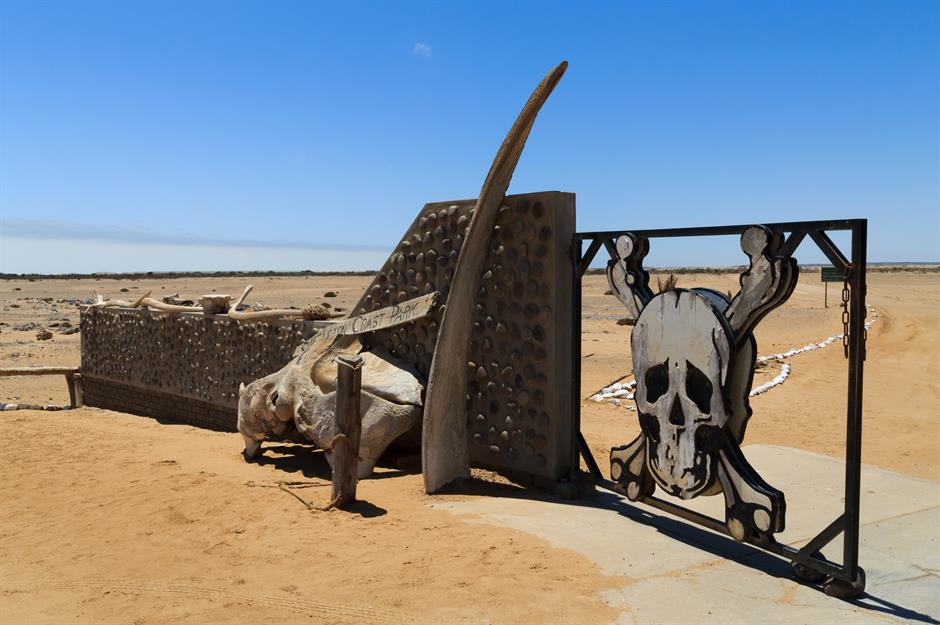
Tourists can visit the southern section of the 6,200-square mile (16,000sq km) Skeleton Coast National Park, while visiting the north requires a permit or joining an organised trip. Intrepid visitors can marvel at the shipwrecks and skeletons, as well as the dramatic sand dunes of the desert.
Kantubek, Vozrozhdeniya Island, Uzbekistan
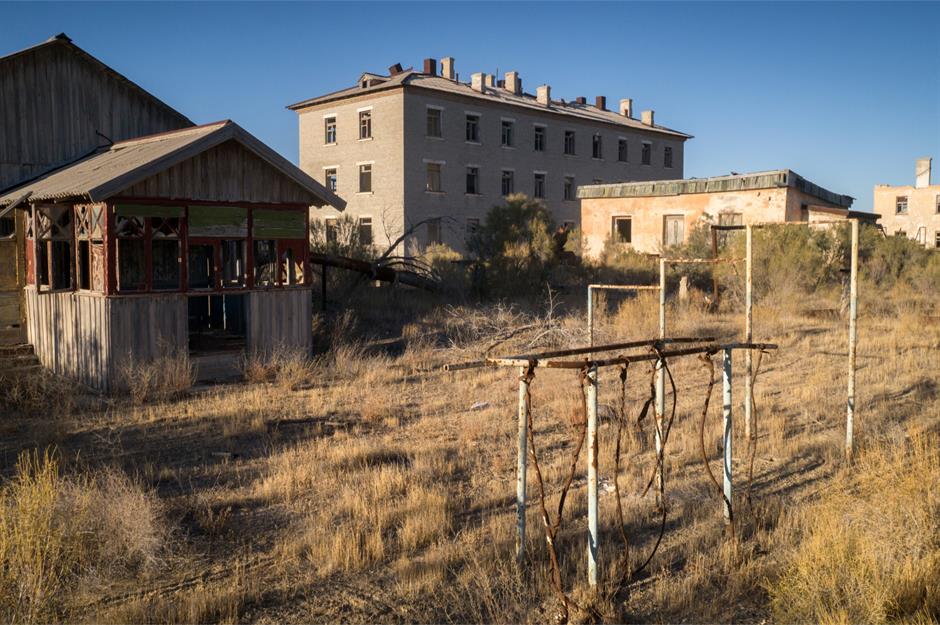
Lying in ruins, the ghost town of Kantubek on Vozrozhdeniya Island in the Aral Sea once housed Soviet scientists conducting top-secret biological weapon research. Experiments were carried out for several decades until the collapse of the Soviet Union in 1991.
Kantubek, Vozrozhdeniya Island, Uzbekistan
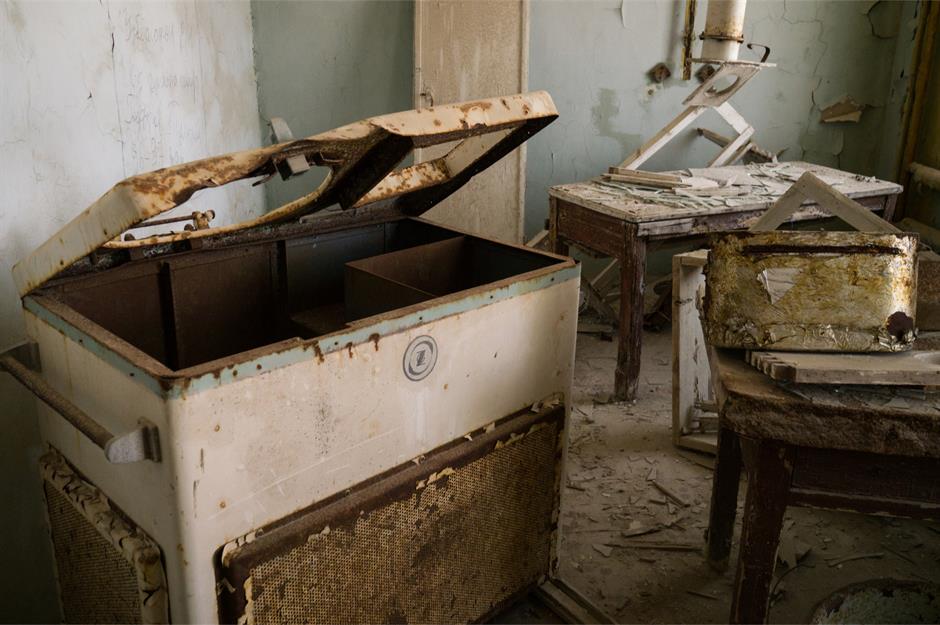
Explosions of shells with anthrax, bubonic plague and other biological agents took place in the southern part of Vozrozhdeniya.
In 1971, an accidental release of smallpox from the island infected 10 people, three of whom died. Tests have also caused widespread deaths of animals living in the Aral Sea.
Kantubek, Vozrozhdeniya Island, Uzbekistan
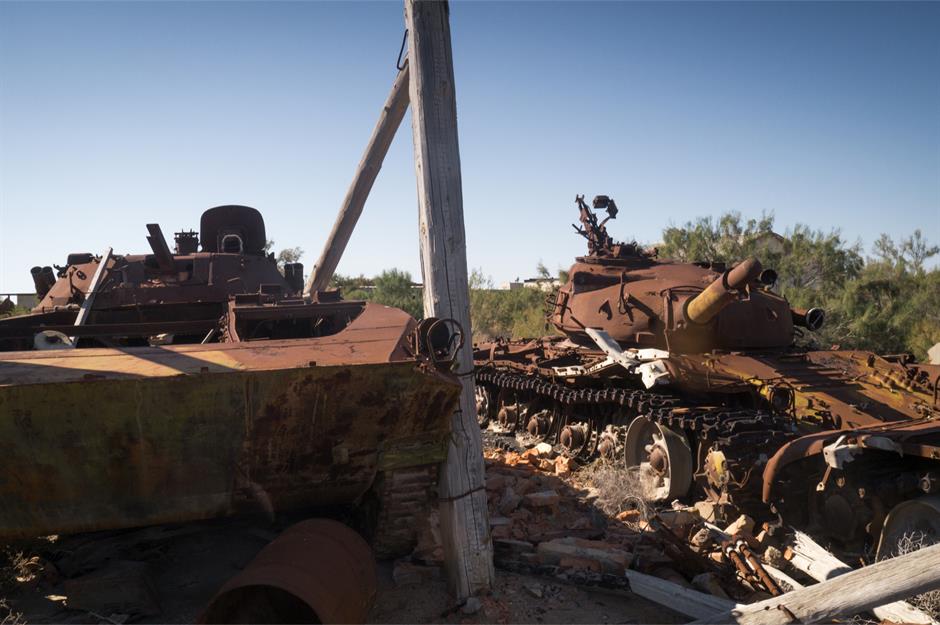
The civil and military infrastructure was abandoned after the evacuation of the island in 1991. However, many containers of the biological agents were left behind and developed leaks.
Kantubek, Vozrozhdeniya Island, Uzbekistan
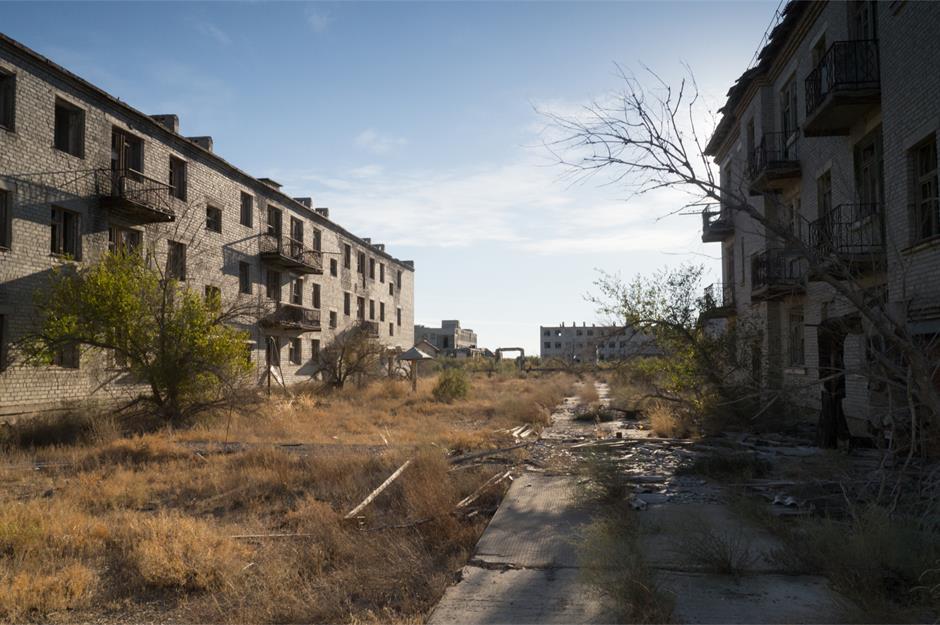
In 2002, an American-led biochemical expedition came to neutralise the dumping grounds on the island, which were believed to be the world's largest for anthrax. Within three months, 100 to 200 tonnes of the dangerous disease agent were decontaminated.
Kantubek, Vozrozhdeniya Island, Uzbekistan
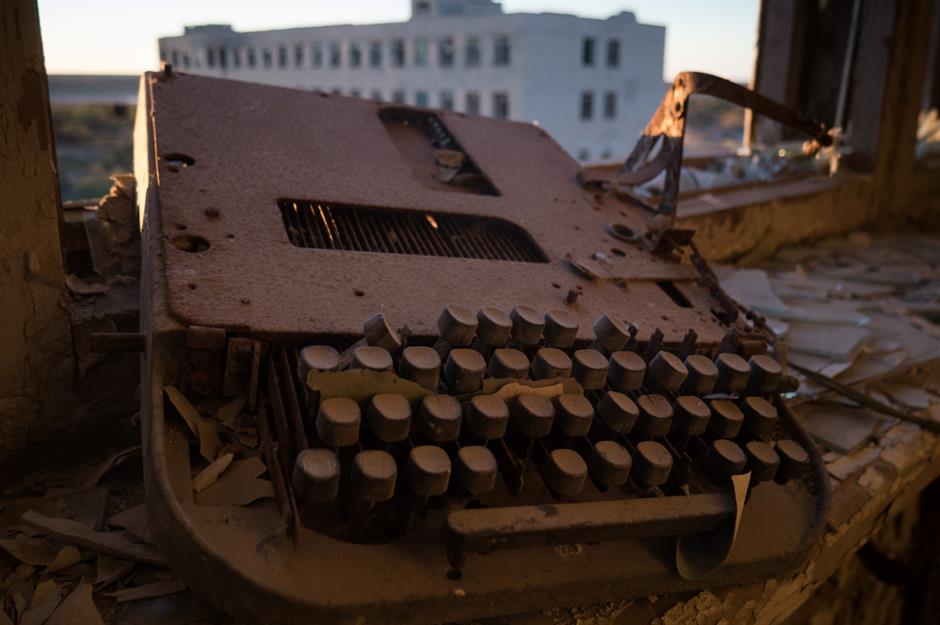
Despite the measures to clean up the area, the burial grounds are still a dangerous place. Visiting here is not recommended due to the ongoing risk of contamination.
Ilha da Queimada Grande, Brazil
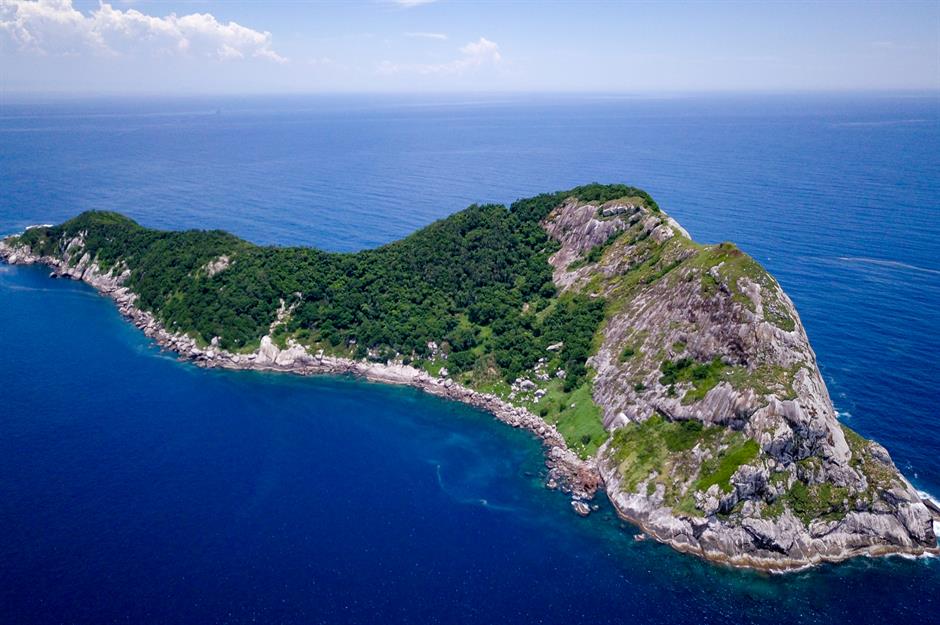
At first glance, this island off the coast of Brazil seems like the perfect escape, with its crystal blue waters, lush vegetation and rocky ridges. However, there is a reason it's a no man's land...
Ilha da Queimada Grande, Brazil

Aptly nicknamed 'Snake Island', Ilha da Queimada Grande is home to around 4,000 venomous vipers. That equals approximately one snake per 10 square feet (1sqm). The bite of the golden lancehead (or Bothrops insularis), a species only found here, is deadly.
The Brazilian government restricts access to the Navy and researchers. In addition to the risk of death, visitors are banned to protect the critically endangered snakes.
Western Sahara
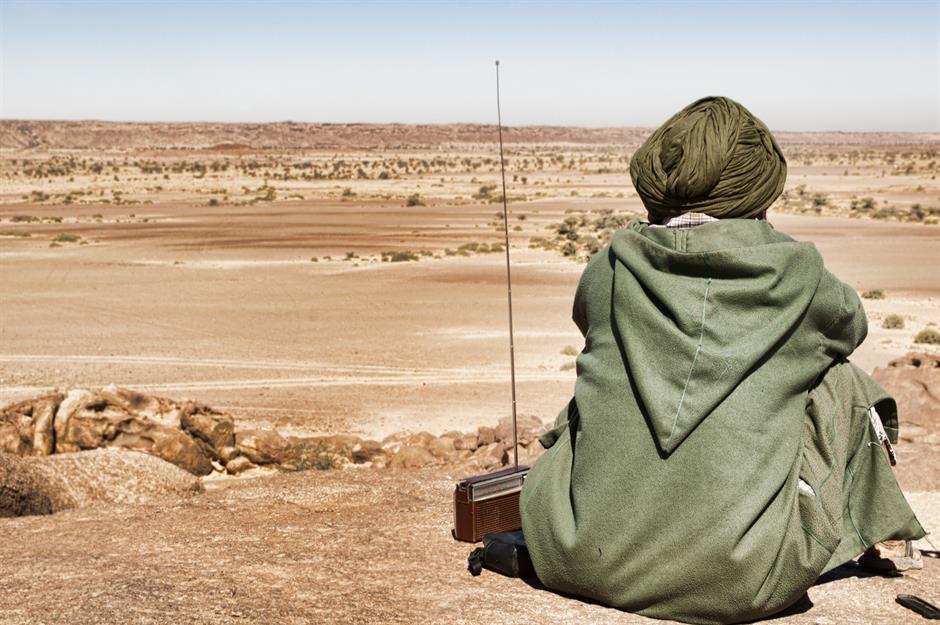
A no man's land of a different kind, Western Sahara is a disputed territory in northwest Africa. It is partially controlled by a nationalist movement, Polisario Front, which fights for an independent state, and the Sahrawi Arab Democratic Republic and is partially occupied by Morocco.
Its legal status remains unresolved, and the United Nations (UN) has called for a referendum to be held.
Western Sahara
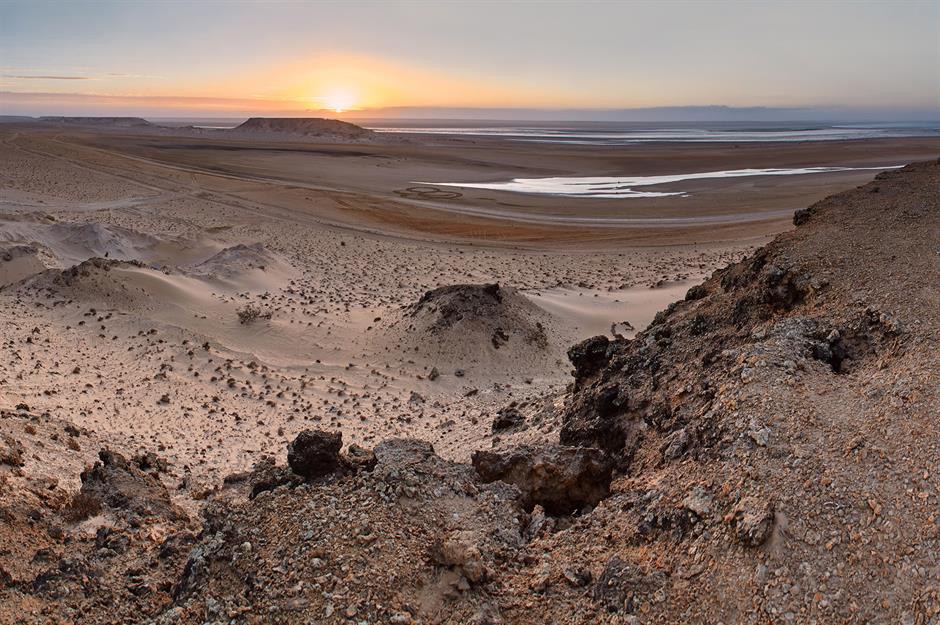
One of the most sparsely populated territories in the world, Western Sahara has just over 500,000 inhabitants and consists mainly of desert. Yet its land mass is larger than that of the UK.
Western Sahara
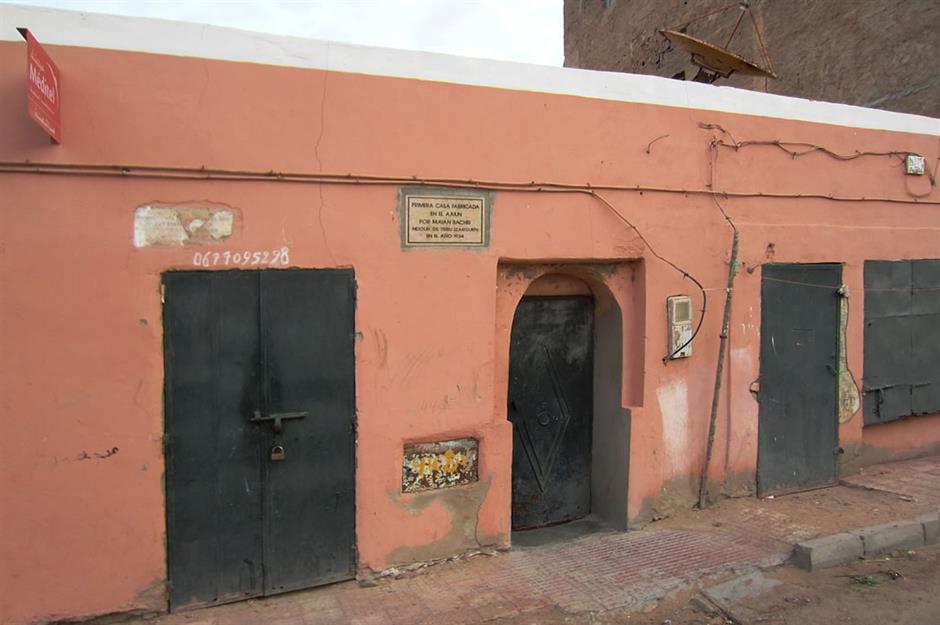
About 200,000 of the region’s residents live in the largest city, Laayoune, which is administered by Morocco and is under the supervision of UN peacekeepers. The house pictured is said to be the oldest, dating to 1934.
While tourists come to Western Sahara, visiting the area around the militarised boundary of Berm is not advised.
Lake Natron, Tanzania
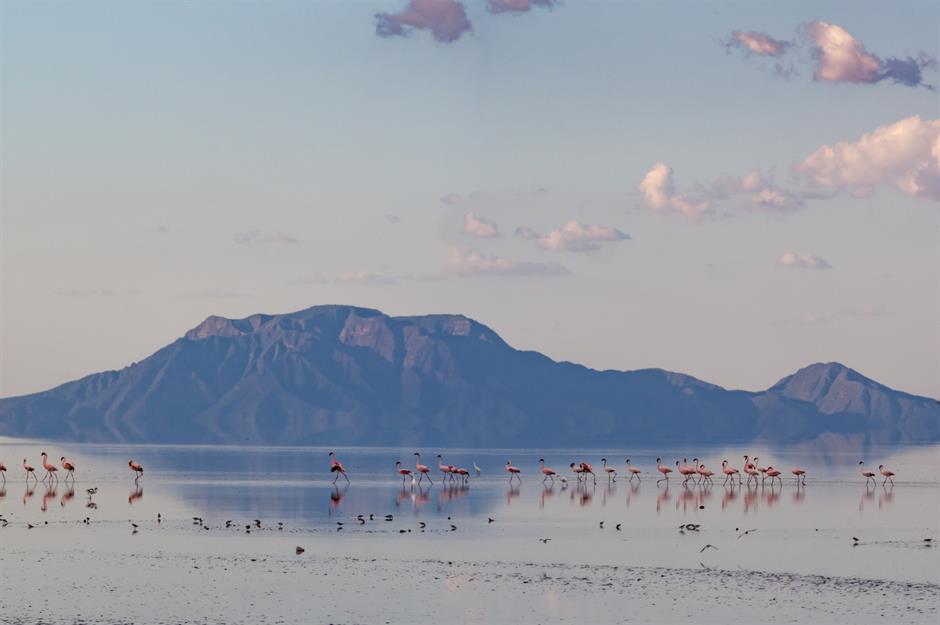
Flamingos and the nearby Ol Doinyo Lengai mountain make this lake in Tanzania's Gregory Rift look like an idyllic spot. However, Lake Natron is a very dangerous place for a swim.
Lake Natron, Tanzania
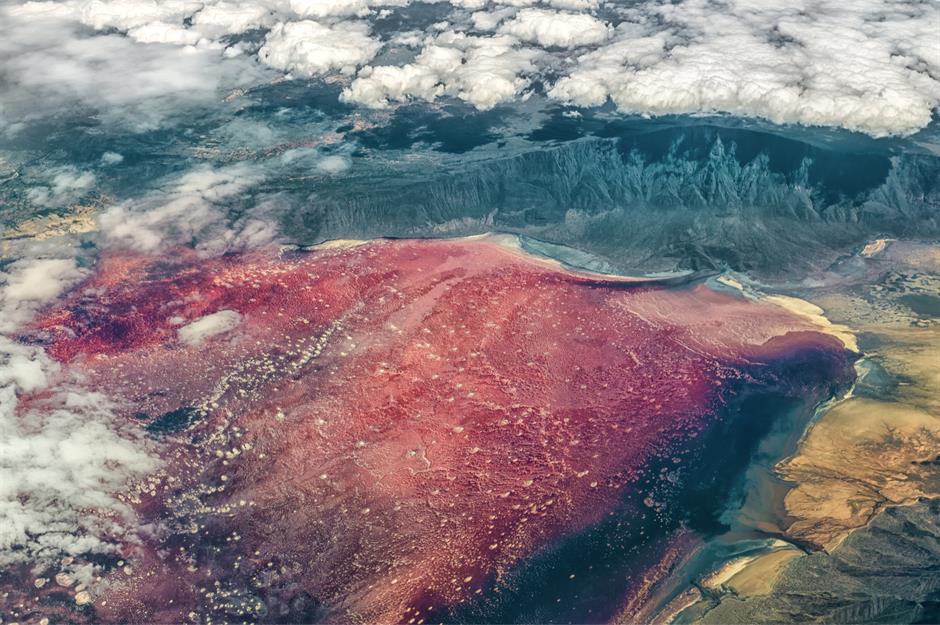
With a pH of up to 12, the water of Lake Natron is so salty that it can calcify bodies, turning them into stone. The water burns the skin and eyes of animals and humans not adapted to the alkalinity, which comes from the sodium carbonate and other minerals from the surrounding hills.
Lake Natron, Tanzania

The water temperature can reach up to 60°C (140°F), which, in addition to the alkalinity, makes the lake inhospitable to many species. However, some flamingos, algae, and – in the lake's less salty outer edges – even some fish, have made the 405-square mile (1,048sq km) expanse of water their home.
Cyprus Buffer Zone
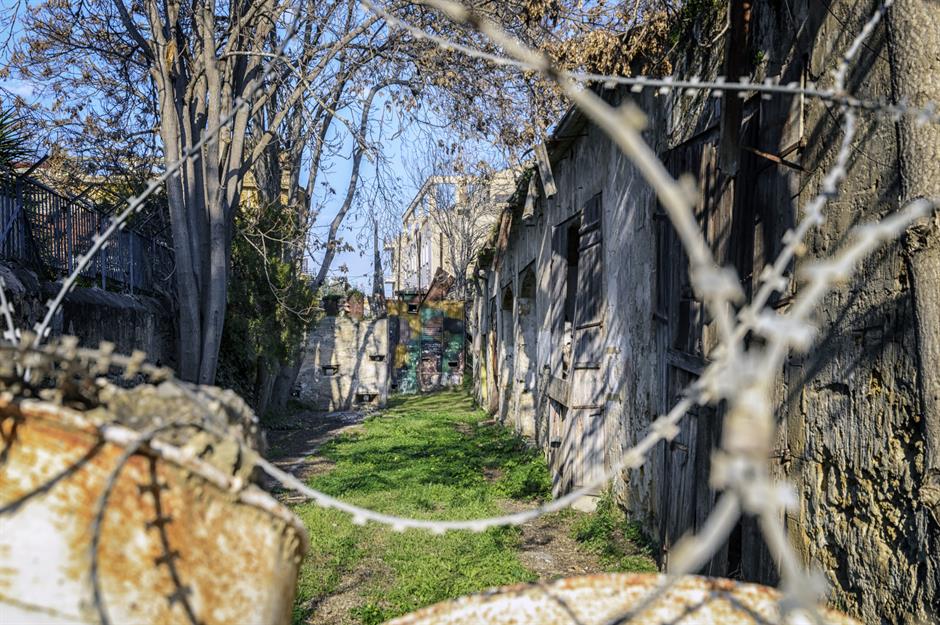
For more than 60 years, time has stood still in the so-called 'Green Line' in Cyprus, a buffer zone introduced by the UN to keep the peace between the warring halves on the Mediterranean island.
Established in 1964, the zone was expanded a decade later following a civil war between the Turkish and the Greek communities on Cyprus, and has largely been a no man's land ever since.
Cyprus Buffer Zone
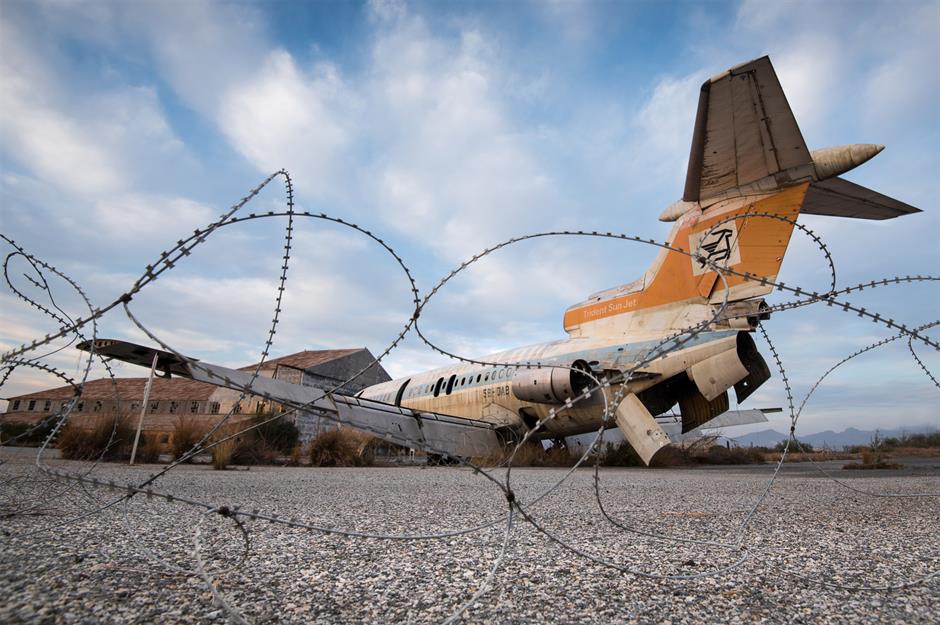
Abandoned houses, shops and even an airport remain untouched and crumbling reminders of a bygone era. At the derelict Nicosia International Airport, a destroyed Cyprus Airways jet still stands near the runway.
Cyprus Buffer Zone
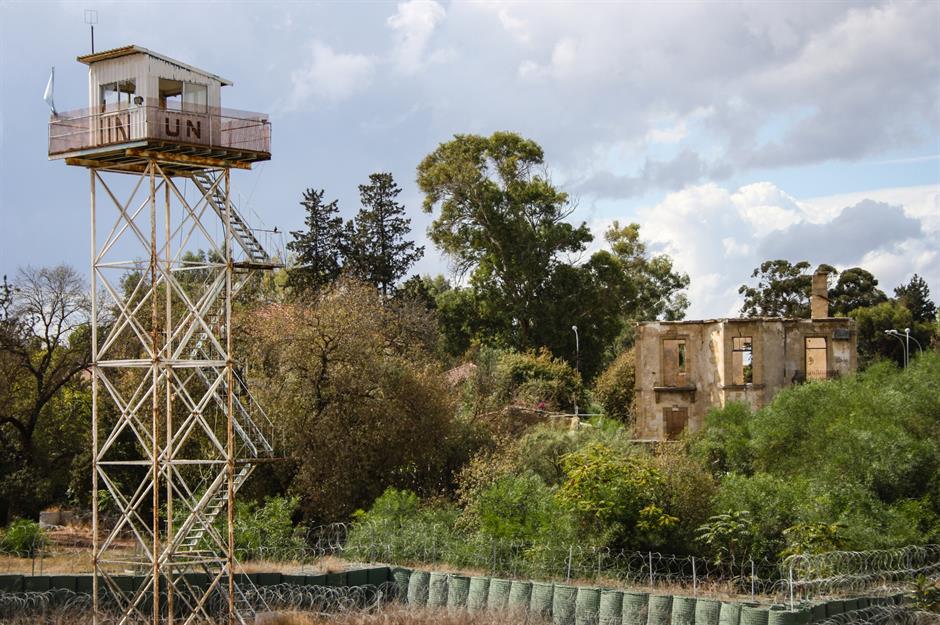
The demilitarised zone stretches 112 miles (180km) across the whole island. In many parts, access is heavily restricted.
Civilians are not allowed to move freely within these areas, due to safety concerns over trip wires and mines.
Cyprus Buffer Zone
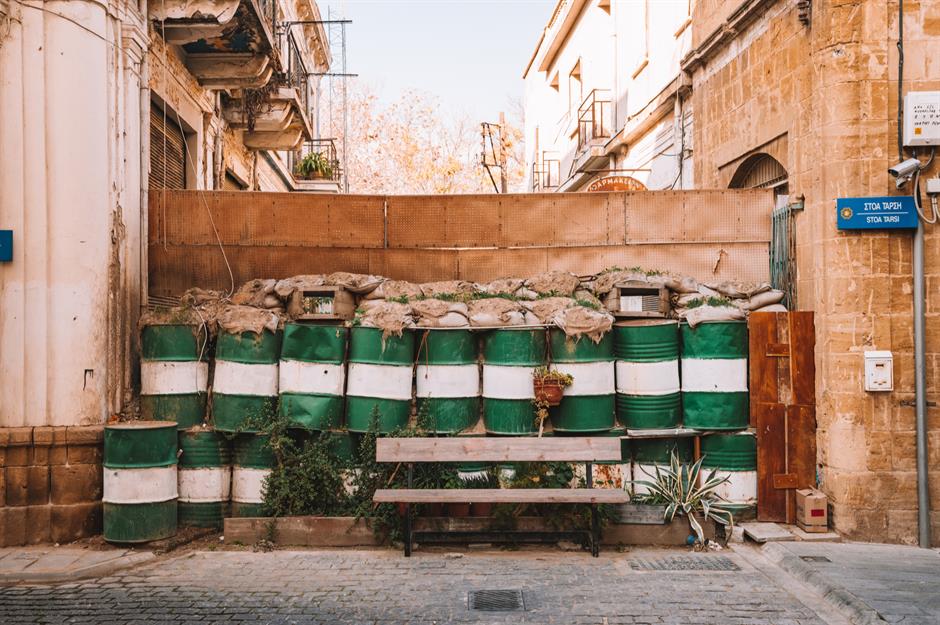
The buffer zone cuts right through the capital of Nicosia (Lefkosia). In some parts of the old town, it is only several feet wide.
Cyprus Buffer Zone
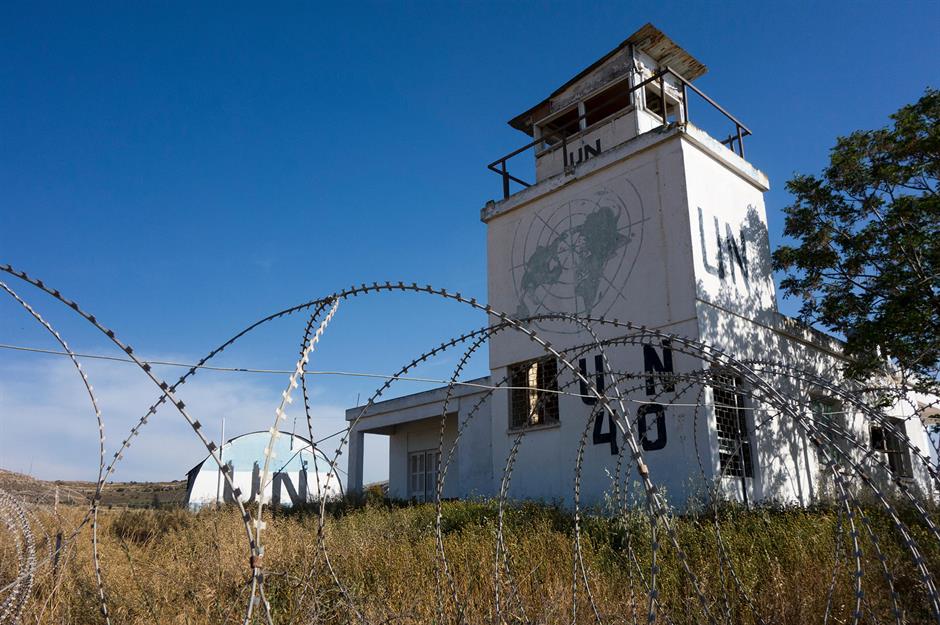
UN peacekeepers are still present in the buffer zone and patrol the area. In the case of an emergency, a mobile unit is always ready to respond.
According to UNFICYP (United Nations Peacekeeping Force in Cyprus), approximately one thousand incidents occur within the buffer zone each year.
Cyprus Buffer Zone

Pictured here are warning signs marking the boundary of the UN. Since 2003, a number of crossing points have opened up that let Cypriots and tourists to walk or drive between the north and south, allowing some freedom of movement.
Chernobyl Exclusion Zone, Ukraine
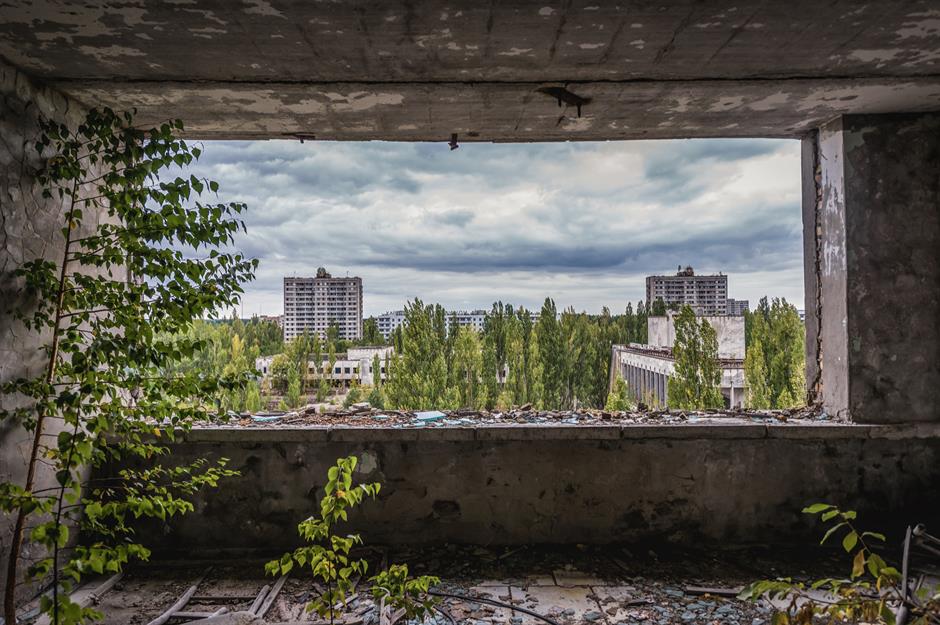
One of the most famous ghost towns in the world, derelict Pripyat stands within the Chernobyl Exclusion Zone, only 12 miles (19km) from the infamous nuclear reactor.
The zone is a 19-mile (30.5km) radius around the former power plant that was introduced shortly after the 1986 disaster. Buildings were abandoned and remain empty. Up until the Russian invasion in 2022, access was strictly regulated by the Ukrainian government.
Chernobyl Exclusion Zone, Ukraine

It may be surprising, but nature has reclaimed much of this highly radioactive place. Trees grow unhindered, poking through the concrete, flowers bloom in the spring, and a herd of horses thrives, after a few were released into the area to see if animals could survive.
Chernobyl Exclusion Zone, Ukraine
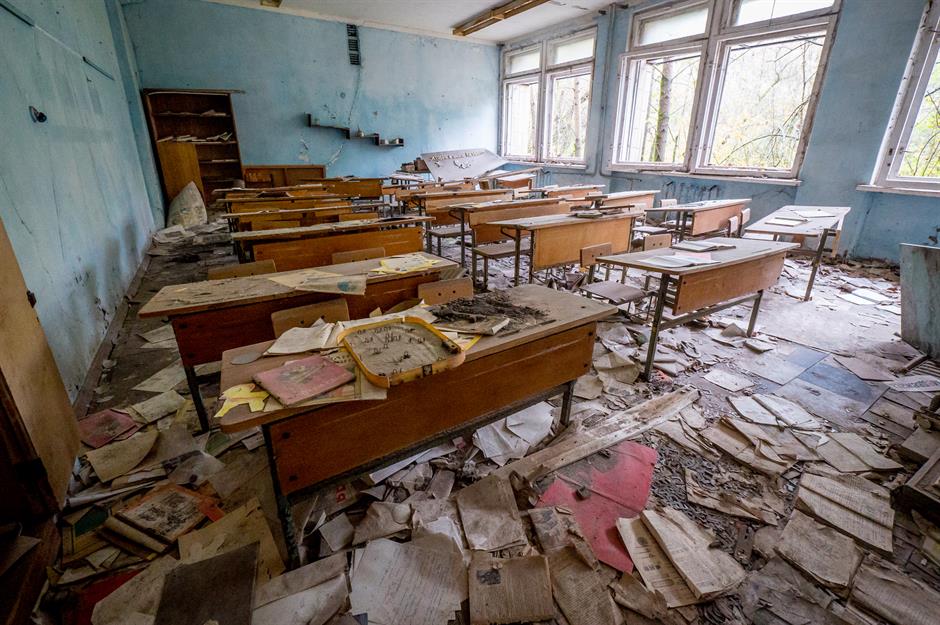
In the deserted school near the Chernobyl power plant, books and paper are scattered on the floor of the classrooms. Inhabitants of the evacuated area had to leave everything behind due to the radiation.
Decades on, it still leaves an eerie feeling.
Chernobyl Exclusion Zone, Ukraine
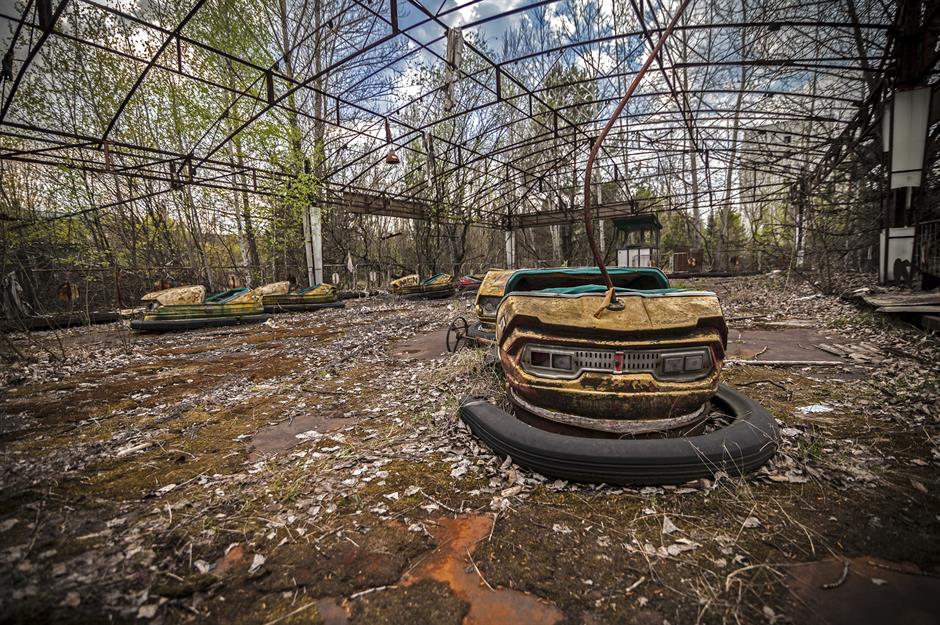
This amusement park in Pripyat paints a stark picture of the impact of the 1986 Chernobyl disaster. Located in what was regarded as a model Soviet town, the site never welcomed any guests – the explosion took place four days before the park had been scheduled to open.
Chernobyl Exclusion Zone, Ukraine
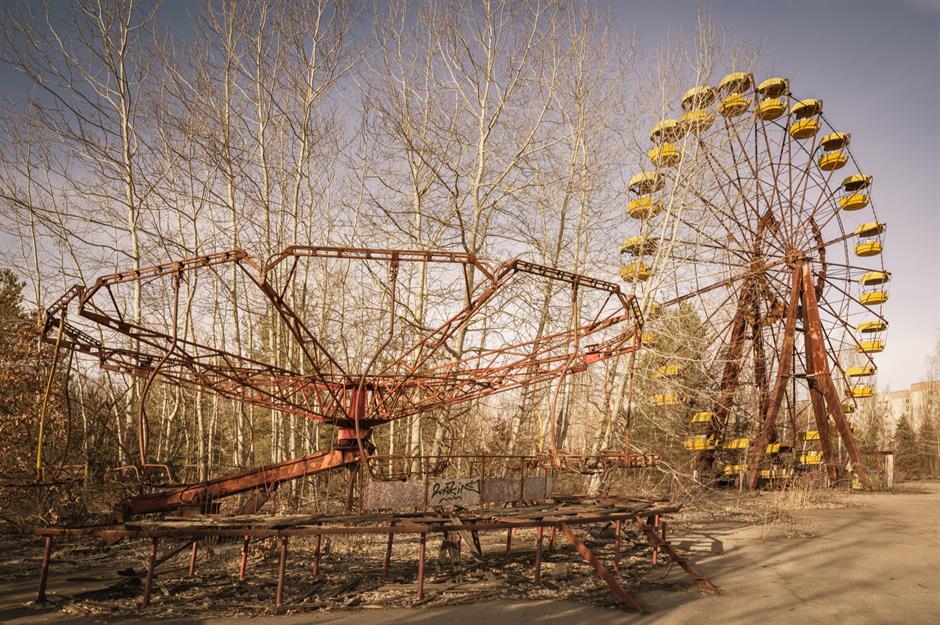
Today, its Ferris wheel, carousels and bumper cars are covered in rust and stand abandoned in the ghost town.
Chernobyl Exclusion Zone, Ukraine
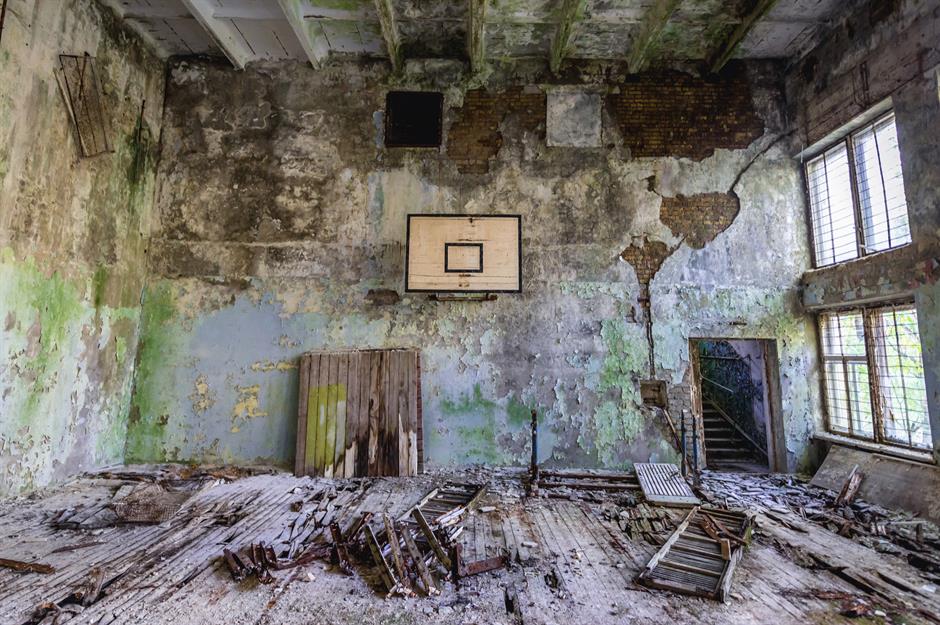
Crumbling walls, cracked wooden floors and parts of a basketball hoop are all that's left of this gym in the exclusion zone. The ruin is one of many abandoned buildings in the area.
Chernobyl Exclusion Zone, Ukraine

This doll, left behind in a kindergarten in Pripyat, is another poignant example of a place frozen in time.
There have been talks to redraw the boundaries of the Chernobyl Exclusion Zone to reflect the declining radioactivity in the outer parts of the area, but some areas still send Geiger counters into a fit of beeps. Before the war, the Chernobyl Exclusion Zone was safe to visit for tourists but only on guided tours.
Read on to discover the eeriest abandoned attraction in every US state
Comments
Be the first to comment
Do you want to comment on this article? You need to be signed in for this feature